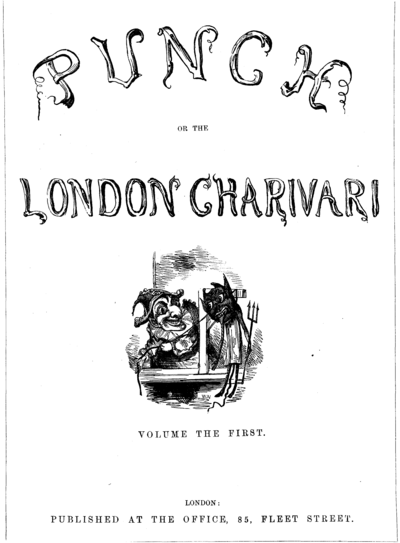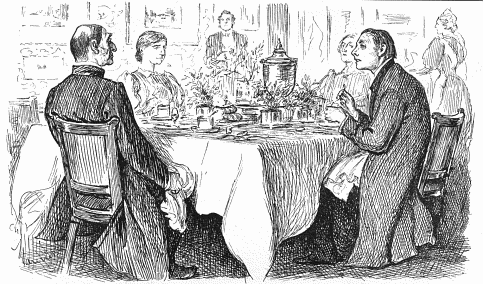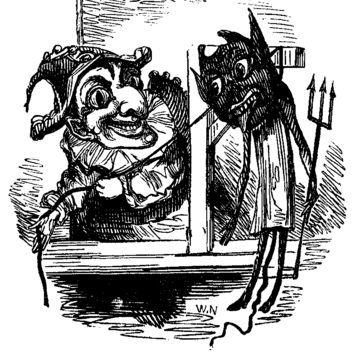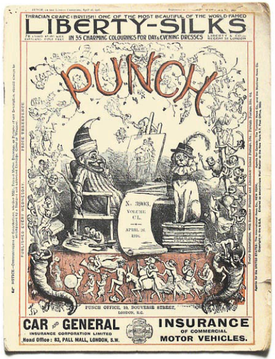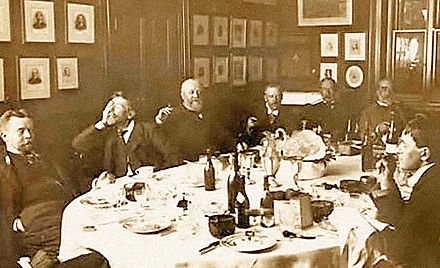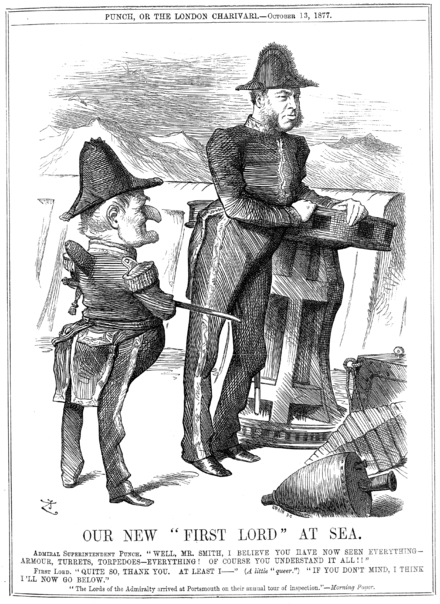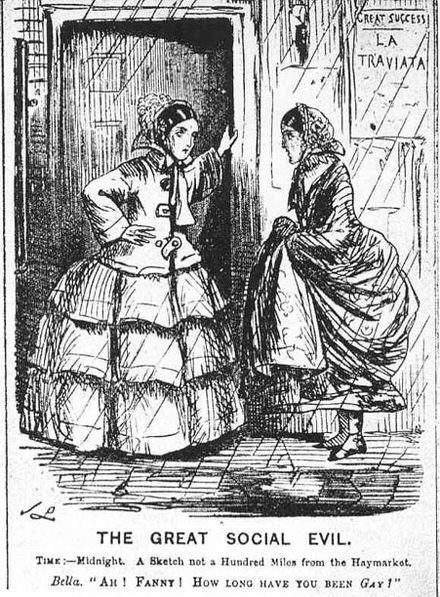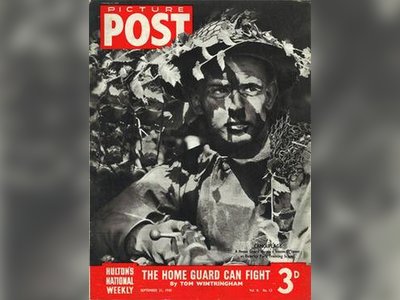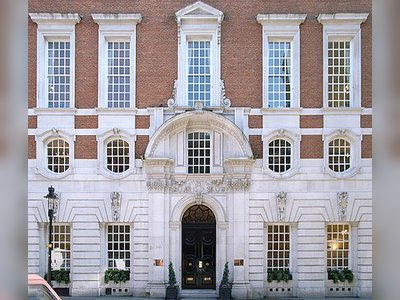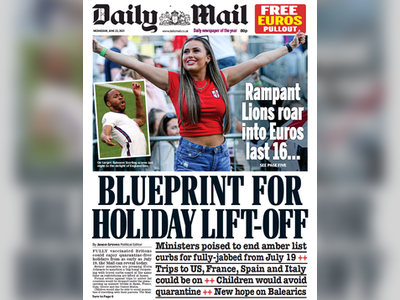British Heritage
Remember, Cherish, Learn.
beta
Punch
A Singular Influence on British Heritage.
With its inception in 1841, Punch, or The London Charivari, ushered in a revolution in the realm of British print culture, offering a potent blend of humour, satire, and innovative illustrative artistry. Co-founded by Henry Mayhew and wood-engraver Ebenezer Landells, the magazine gained significant influence in the 1840s and 1850s, contributing significantly to British heritage. It not only popularised the modern concept of "cartoon" but also shaped Britain's satirical tradition.
On 17 July 1841, Mayhew and Landells invested £25 to launch a magazine that would carve a unique niche in British periodical literature. The name and masthead of the publication, an anarchic glove puppet Mr. Punch, derived from the iconic Punch and Judy shows. This also served as a clever wordplay on one of the founding editors, Mark Lemon, hinting at the tangy twist of humour the magazine intended to offer its readers.
Financial struggles marked the early years until the magazine's unexpected success with the "Almanack" issue in 1842, which sold an astounding 90,000 copies. This success attracted the attention of printers and publishers Bradbury and Evans, who purchased the magazine and propelled it further using their expertise in mass printing.
Punch's greatest contribution to British heritage lies in its redefinition of the term "cartoon". The term, originally associated with preliminary sketches for murals, was humorously appropriated by Punch in 1843 to describe its political illustrations. This unique usage triggered widespread adoption of the term, permanently altering the lexicon of artistic commentary.
Prominent artists of the time, such as John Leech, Richard Doyle, John Tenniel, and Charles Keene, lent their talents to Punch, contributing to the visually distinctive and memorable style of the magazine. This collective, known as "The Punch Brotherhood", included notable authors like Charles Dickens, shaping the literary and artistic sensibilities of the magazine.
Punch's first female contributor, Helen Hoppner Coode, is remembered for her nineteen drawings, marking a significant milestone in the magazine's history.
Punch stood out amidst the satirical press of its time due to its sophisticated humour and avoidance of offensive material. This approach earned it the patronage of other papers such as The Times and the News of the World, which often used excerpts from Punch as fillers. The magazine also earned recognition from intellectual journals such as the Westminster Review, further cementing its status.
Beyond its influence on the art and literature of the period, Punch had an indelible impact on British society. The magazine gave several phrases to the English language, including "The Crystal Palace", and "Curate's egg". Several classics of British humour were first serialised in Punch, such as the Diary of a Nobody and 1066 and All That.
The magazine's circulation exceeded 100,000 around 1910, peaking at nearly 184,000 in the late 1940s. However, a steady decline in sales in subsequent years led to its closure in 2002, marking the end of a publication that had shaped British humour and satire for 161 years.
Punch's influence extended far beyond the British Isles, echoing throughout the British Empire. Experiences of Britons in the colonies, particularly in India, often found representation in Punch, providing British readers with unique insights into the subcontinent. The magazine was also influential in countries such as Turkey, India, Japan, and China, inspiring similar publications in Cairo, Yokohama, Tokyo, Hong Kong, and Shanghai.
Despite the cessation of the magazine in 2002, Punch's legacy endured. Its material was often collected in book formats, and the rights to the name were purchased in 1996 by businessman Mohamed Al-Fayed. He relaunched the magazine that year, aiming to compete with Private Eye. Despite these efforts, the magazine once again ceased publication in 2002.
In 2004, the British Library acquired much of the Punch archives, including the famous Punch table. This long, oval, Victorian table, which found its place in the magazine's offices around 1855, bears the carved initials of Punch's writers, artists, editors, and some special guests. It stands as a tangible symbol of the magazine's enduring legacy and impact on British heritage.
In summary, the legacy of Punch extends far beyond its pages, shaping British humour, satirical tradition, and the very language itself. It is a testament to the power of the press in influencing cultural heritage and social discourse.
The Birth of Punch
On 17 July 1841, Mayhew and Landells invested £25 to launch a magazine that would carve a unique niche in British periodical literature. The name and masthead of the publication, an anarchic glove puppet Mr. Punch, derived from the iconic Punch and Judy shows. This also served as a clever wordplay on one of the founding editors, Mark Lemon, hinting at the tangy twist of humour the magazine intended to offer its readers.
Financial struggles marked the early years until the magazine's unexpected success with the "Almanack" issue in 1842, which sold an astounding 90,000 copies. This success attracted the attention of printers and publishers Bradbury and Evans, who purchased the magazine and propelled it further using their expertise in mass printing.
Revolutionising the Cartoon
Punch's greatest contribution to British heritage lies in its redefinition of the term "cartoon". The term, originally associated with preliminary sketches for murals, was humorously appropriated by Punch in 1843 to describe its political illustrations. This unique usage triggered widespread adoption of the term, permanently altering the lexicon of artistic commentary.
Artistry and Literary Contributions
Prominent artists of the time, such as John Leech, Richard Doyle, John Tenniel, and Charles Keene, lent their talents to Punch, contributing to the visually distinctive and memorable style of the magazine. This collective, known as "The Punch Brotherhood", included notable authors like Charles Dickens, shaping the literary and artistic sensibilities of the magazine.
Punch's first female contributor, Helen Hoppner Coode, is remembered for her nineteen drawings, marking a significant milestone in the magazine's history.
Reshaping Satirical Press
Punch stood out amidst the satirical press of its time due to its sophisticated humour and avoidance of offensive material. This approach earned it the patronage of other papers such as The Times and the News of the World, which often used excerpts from Punch as fillers. The magazine also earned recognition from intellectual journals such as the Westminster Review, further cementing its status.
A Cultural Touchstone
Beyond its influence on the art and literature of the period, Punch had an indelible impact on British society. The magazine gave several phrases to the English language, including "The Crystal Palace", and "Curate's egg". Several classics of British humour were first serialised in Punch, such as the Diary of a Nobody and 1066 and All That.
The magazine's circulation exceeded 100,000 around 1910, peaking at nearly 184,000 in the late 1940s. However, a steady decline in sales in subsequent years led to its closure in 2002, marking the end of a publication that had shaped British humour and satire for 161 years.
Punch's Global Impact
Punch's influence extended far beyond the British Isles, echoing throughout the British Empire. Experiences of Britons in the colonies, particularly in India, often found representation in Punch, providing British readers with unique insights into the subcontinent. The magazine was also influential in countries such as Turkey, India, Japan, and China, inspiring similar publications in Cairo, Yokohama, Tokyo, Hong Kong, and Shanghai.
Later Years and Resurrections
Despite the cessation of the magazine in 2002, Punch's legacy endured. Its material was often collected in book formats, and the rights to the name were purchased in 1996 by businessman Mohamed Al-Fayed. He relaunched the magazine that year, aiming to compete with Private Eye. Despite these efforts, the magazine once again ceased publication in 2002.
The Punch Table: A Symbol of Enduring Legacy
In 2004, the British Library acquired much of the Punch archives, including the famous Punch table. This long, oval, Victorian table, which found its place in the magazine's offices around 1855, bears the carved initials of Punch's writers, artists, editors, and some special guests. It stands as a tangible symbol of the magazine's enduring legacy and impact on British heritage.
In summary, the legacy of Punch extends far beyond its pages, shaping British humour, satirical tradition, and the very language itself. It is a testament to the power of the press in influencing cultural heritage and social discourse.
- Punch (magazine)en.wikipedia.org
